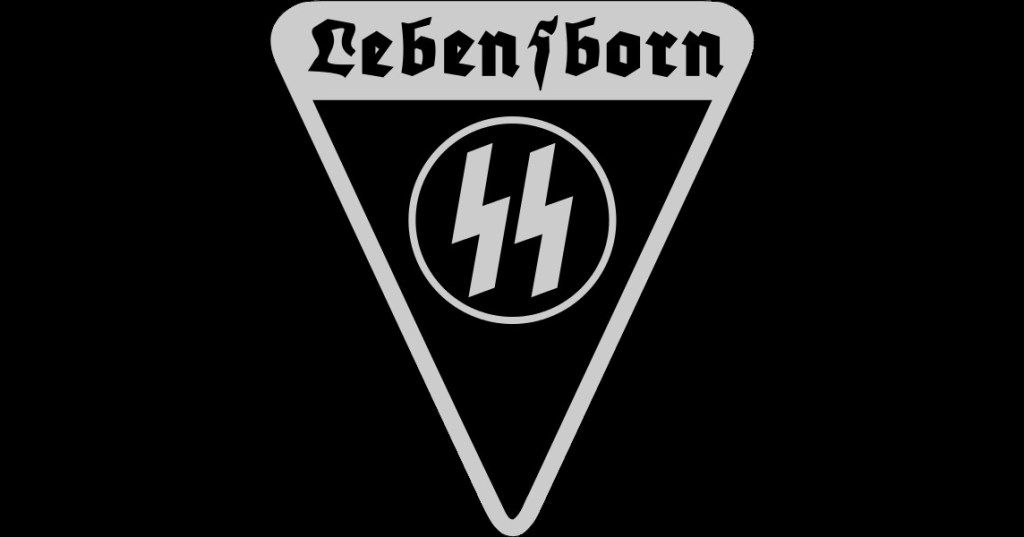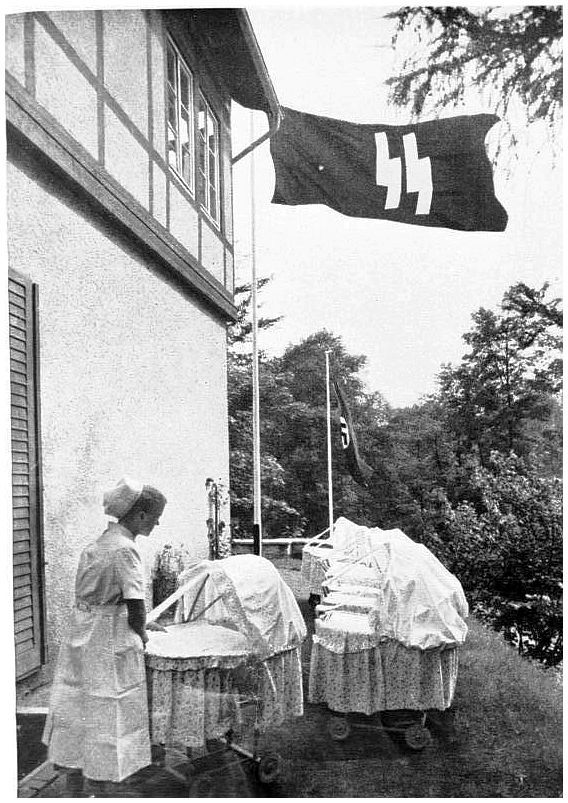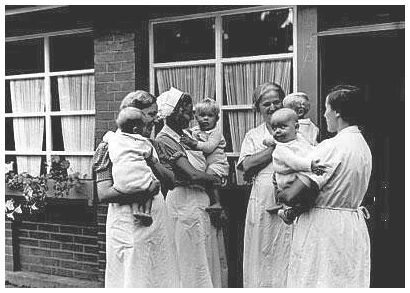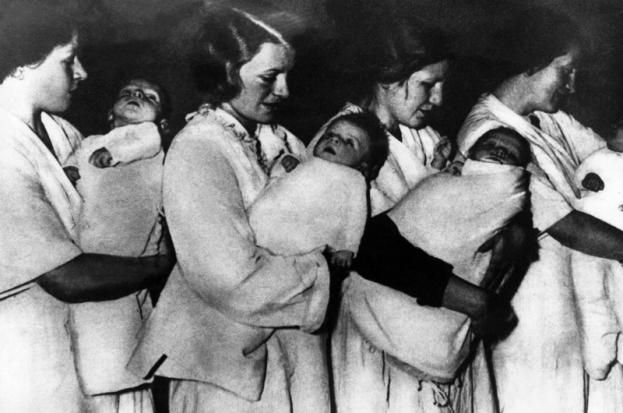- Joined
- Oct 11, 2010
- Messages
- 12,704
- Reaction score
- 7,454
- Age
- 61
The ideology of an Aryan master race led Nazi Germany to embark on a twisted program of eugenics beginning in the mid-1930s. Named Lebensborn, the program aimed to increase the number of “racially pure†Germans through selective interbreeding.

In 1936, Nazi supporter and school graduate Hildegard Trutz was recruited as one of Germany’s racially ‘pure’ women, chosen to sleep with SS officers in the hope of producing an Aryan child
Hildegard Trutz had been a loyal supporter of the Nazis ever since Hitler came to power. She had joined the Bund Deutscher Mädel (BDM, the female equivalent of the Hitler Youth) in 1933 and loved attending its weekly meetings. ‘I was mad about Adolf Hitler and our new better Germany,’ she later admitted. ‘I learned how tremendously valuable we young people were to Germany.’
Trutz quickly became a figurehead of her local organization, in part because of her Germanic blonde hair and blue eyes. ‘I was pointed out as the perfect example of the Nordic woman,’ she said, ‘for besides my long legs and my long trunk, I had the broad hips and pelvis built for child-bearing.’
In 1936, when she was eighteen, Trutz finished her schooling and was at a loss as to what to do next. She chatted with a BDM leader who made a suggestion that was to change Trutz’s life for ever. ‘If you don’t know what to do,’ said the leader, ‘why not give the Führer a child? What Germany needs more than anything is racially valuable stock.’
Trutz was unaware of the state-sponsored programme known as Lebensborn. Its aim was to raise the birth rate of blond-haired, blue-eyed ‘Aryan’ children through interbreeding. Racially ‘pure’ women were chosen to sleep with SS officers in the hope that they would fall pregnant.
The BDM leader explained to her exactly how Lebensborn worked. She would be given a series of medical tests, along with a thorough investigation of her background. It was essential that she had no Jewish blood. Once given the all-clear, she would be able to select a breeding partner from a group of SS officers.
Trutz listened with growing enthusiasm. ‘It sounded wonderful,’ she later admitted, and she signed up immediately. Aware that her parents would disapprove, she told them she was undertaking a residential course in National Socialism.

Illustratrive image
She was escorted to an old castle in Bavaria, near the Tegernsee. There were forty other girls in residence and all were living under assumed names. ‘All you needed to be accepted there was a certificate of Aryan ancestry as far back at least as your great-grandparents.’
The castle itself was the height of luxury. There were common rooms for sports and games, a library, music room and even a cinema. According to Trutz: ‘The food was the best I have ever tasted; we didn’t have to work and there were masses of servants.’ She was by her own admission self-indulgent and lazy and she quickly learned to enjoy life in the castle.
‘The whole place was in the charge of a professor, a high-up SS doctor, who examined each of us very thoroughly as soon as we arrived,’ Trutz said. ‘We had to make a statutory declaration that there had never been any cases of hereditary diseases, dipsomania or imbecility in our family.’
The professor also warned the girls that they would have to sign a document renouncing all claims to any children they produced, as they were to be the property of the state. They would be brought up in special institutions that would instil an absolute loyalty to the Nazi ideal.
After their initiation, Trutz and the other girls were introduced to the SS men who were to be their breeding partners. Trutz liked what she saw. ‘They were all very tall and strong with blue eyes and blond hair.’ There was a getting-to-know-you session, with the group playing games together, watching films and enjoying social evenings in the castle.
‘We were given about a week to pick the man we liked and we were told to see to it that his hair and eyes corresponded exactly to ours,’ said Trutz. The girls were not told the names of any of the men: anonymity was a key principle of the Lebensborn programme.
‘When we had made our choice, we had to wait until the tenth day after the beginning of the last period.’ Each girl was given another medical examination and told to receive her chosen SS man in her room that very night. Trutz was unbelievably excited, not just about the sexual activity, but the fact that she was doing it all for her beloved Führer.

Nurses carry the Lebensborn babies
‘As both the father of my child and I believed completely in the importance of what we were doing, we had no shame or inhibitions of any kind.’ She was particularly impressed with the ‘smashing looks’ of her chosen partner, although she thought he was probably a little stupid.
The officer slept with Trutz for three evenings in that first week. On the other evenings, he had to sleep with other girls at the castle.
Trutz fell pregnant almost immediately and was moved into a maternity home for the next nine months. ‘My confinement came neither too soon nor too late,’ she said. ‘It was not an easy birth, for no good German woman would think of having any artificial aids, such as injections to deaden the pain, like they had in the degenerate Western democracies.’
She weaned her baby son for two weeks and then he was removed from her side and taken to a special SS home where he was to be brought up as a loyal servant of the Nazi state. Trutz never saw him again. Nor, for that matter, did she see the father.

Illustrative image
In the years that followed she was tempted to breed more children, but she eventually fell in love with a young officer and they got married. When she told her new husband about her involvement in the Lebensborn programme, she was ‘rather surprised to find that he was not as pleased about it as he might have been’. But he could not openly criticize her, ‘seeing that I had been doing my duty to the Führer’.
Trutz never discovered what became of her child and his eventual fate remains a mystery. Like so many Lebensborn babies, he almost certainly found himself ostracized in post-war Germany, his birth and upbringing a stigma that could never be completely expunged.
It is estimated that some 20,000 babies were bred during the twelve years of the Third Reich, principally in Germany and Norway. Many were adopted after the war, by which time the records of their birth had been destroyed. To this day the majority have never been able to discover the terrible truth about their conception and birth.
from:
knowledgenuts.com
spartacus-educational.com
and others sites

In 1936, Nazi supporter and school graduate Hildegard Trutz was recruited as one of Germany’s racially ‘pure’ women, chosen to sleep with SS officers in the hope of producing an Aryan child
Hildegard Trutz had been a loyal supporter of the Nazis ever since Hitler came to power. She had joined the Bund Deutscher Mädel (BDM, the female equivalent of the Hitler Youth) in 1933 and loved attending its weekly meetings. ‘I was mad about Adolf Hitler and our new better Germany,’ she later admitted. ‘I learned how tremendously valuable we young people were to Germany.’
Trutz quickly became a figurehead of her local organization, in part because of her Germanic blonde hair and blue eyes. ‘I was pointed out as the perfect example of the Nordic woman,’ she said, ‘for besides my long legs and my long trunk, I had the broad hips and pelvis built for child-bearing.’
In 1936, when she was eighteen, Trutz finished her schooling and was at a loss as to what to do next. She chatted with a BDM leader who made a suggestion that was to change Trutz’s life for ever. ‘If you don’t know what to do,’ said the leader, ‘why not give the Führer a child? What Germany needs more than anything is racially valuable stock.’
Trutz was unaware of the state-sponsored programme known as Lebensborn. Its aim was to raise the birth rate of blond-haired, blue-eyed ‘Aryan’ children through interbreeding. Racially ‘pure’ women were chosen to sleep with SS officers in the hope that they would fall pregnant.
The BDM leader explained to her exactly how Lebensborn worked. She would be given a series of medical tests, along with a thorough investigation of her background. It was essential that she had no Jewish blood. Once given the all-clear, she would be able to select a breeding partner from a group of SS officers.
Trutz listened with growing enthusiasm. ‘It sounded wonderful,’ she later admitted, and she signed up immediately. Aware that her parents would disapprove, she told them she was undertaking a residential course in National Socialism.

Illustratrive image
She was escorted to an old castle in Bavaria, near the Tegernsee. There were forty other girls in residence and all were living under assumed names. ‘All you needed to be accepted there was a certificate of Aryan ancestry as far back at least as your great-grandparents.’
The castle itself was the height of luxury. There were common rooms for sports and games, a library, music room and even a cinema. According to Trutz: ‘The food was the best I have ever tasted; we didn’t have to work and there were masses of servants.’ She was by her own admission self-indulgent and lazy and she quickly learned to enjoy life in the castle.
‘The whole place was in the charge of a professor, a high-up SS doctor, who examined each of us very thoroughly as soon as we arrived,’ Trutz said. ‘We had to make a statutory declaration that there had never been any cases of hereditary diseases, dipsomania or imbecility in our family.’
The professor also warned the girls that they would have to sign a document renouncing all claims to any children they produced, as they were to be the property of the state. They would be brought up in special institutions that would instil an absolute loyalty to the Nazi ideal.
After their initiation, Trutz and the other girls were introduced to the SS men who were to be their breeding partners. Trutz liked what she saw. ‘They were all very tall and strong with blue eyes and blond hair.’ There was a getting-to-know-you session, with the group playing games together, watching films and enjoying social evenings in the castle.
‘We were given about a week to pick the man we liked and we were told to see to it that his hair and eyes corresponded exactly to ours,’ said Trutz. The girls were not told the names of any of the men: anonymity was a key principle of the Lebensborn programme.
‘When we had made our choice, we had to wait until the tenth day after the beginning of the last period.’ Each girl was given another medical examination and told to receive her chosen SS man in her room that very night. Trutz was unbelievably excited, not just about the sexual activity, but the fact that she was doing it all for her beloved Führer.

Nurses carry the Lebensborn babies
‘As both the father of my child and I believed completely in the importance of what we were doing, we had no shame or inhibitions of any kind.’ She was particularly impressed with the ‘smashing looks’ of her chosen partner, although she thought he was probably a little stupid.
The officer slept with Trutz for three evenings in that first week. On the other evenings, he had to sleep with other girls at the castle.
Trutz fell pregnant almost immediately and was moved into a maternity home for the next nine months. ‘My confinement came neither too soon nor too late,’ she said. ‘It was not an easy birth, for no good German woman would think of having any artificial aids, such as injections to deaden the pain, like they had in the degenerate Western democracies.’
She weaned her baby son for two weeks and then he was removed from her side and taken to a special SS home where he was to be brought up as a loyal servant of the Nazi state. Trutz never saw him again. Nor, for that matter, did she see the father.

Illustrative image
In the years that followed she was tempted to breed more children, but she eventually fell in love with a young officer and they got married. When she told her new husband about her involvement in the Lebensborn programme, she was ‘rather surprised to find that he was not as pleased about it as he might have been’. But he could not openly criticize her, ‘seeing that I had been doing my duty to the Führer’.
Trutz never discovered what became of her child and his eventual fate remains a mystery. Like so many Lebensborn babies, he almost certainly found himself ostracized in post-war Germany, his birth and upbringing a stigma that could never be completely expunged.
It is estimated that some 20,000 babies were bred during the twelve years of the Third Reich, principally in Germany and Norway. Many were adopted after the war, by which time the records of their birth had been destroyed. To this day the majority have never been able to discover the terrible truth about their conception and birth.
from:
knowledgenuts.com
spartacus-educational.com
and others sites












































































































